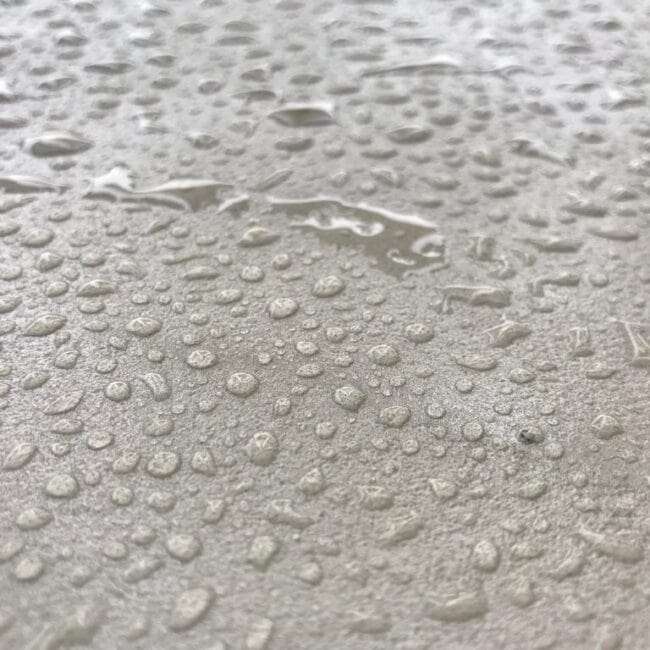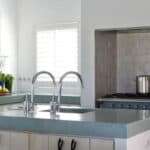The world of micro concrete in the kitchen by Marius Aurenti
An innovation of the last few decades, micro concrete has rapidly earned its spurs, cherished by architects and interior designers for its modern, minimalist appeal, warmth, rich color palette and malleability.
Bohemian chic, by the beach or in the countryside, Ma’s micro concrete brings charm and character to the kitchen. It can be used to create frames, credenzas and worktops in a single piece, and combines with wood, textiles and other materials to create a warm, unique world.
In a minimalist, functional design, micro concrete enhances graphic lines while adding a deep, visual and sensual warmth.
In the kitchen, micro concrete does it all:
- of soils
- from walls
- from work plans
- and even indoor or outdoor summer kitchen tables.
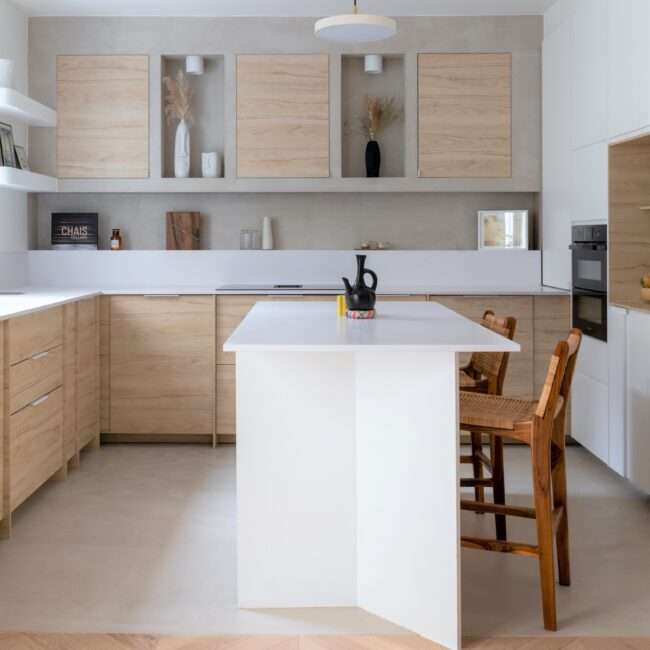
Advantages of micro concrete in the kitchen
Waterproof
Originally a porous material, micro concrete can be made waterproof and therefore resistant to water and humidity, making it an ideal option for high-water-traffic areas such as bathrooms and kitchens.
Durable
What’s more, micro concrete is durable, able to withstand daily wear and light impact, making it an appropriate choice for high-traffic areas. Isn’t that the case with any self-respecting kitchen?
Clean and easy to maintain
What’s more, it’s clean and easy to maintain, requiring little effort to clean and keep in good condition.
Discover the Marius Aurenti range of micro concrete cleaning products.
Warm
Finally, micro concrete offers a warm atmosphere thanks to its smooth texture and contemporary look, adding a modern, elegant touch to any space.
Micro concrete kitchen floor
A micro concrete kitchen floor has many qualities that make it the flooring of choice in construction and renovation projects.
- A hard-wearing material, micro concrete can withstand intense kitchen traffic without deteriorating. Protected by a mineral glaze and varnish, it withstands knocks, scratches and wear and tear.
- Made water and stain repellent by water and oil repellent treatments, micro concrete kitchen floors are ideal for this damp, messy room where water, liquids and food products are frequently spilled.
- Aesthetically pleasing, micro concrete offers a contemporary, elegant and industrial look that adds a touch of modernity to any kitchen. Available in a wide range of colors, finishes and patterns, this material can be used to create a customized floor that matches the kitchen’s decorating style: Scandinavian, japandi, industrial loft, cottage, etc.
- Versatile, micro concrete can be applied to different substrates, such as concrete, tiles, etc., making it suitable for a variety of kitchen floor coverings.
- Unlike some other floor coverings, micro concrete is hypoallergenic: it doesn’t support the growth of mold, fungi, bacteria or other allergens, and is a healthy option for people sensitive to allergies or respiratory problems.
- A well-designed micro concrete kitchen floor is easy to clean and maintain.
All in all, micro concrete kitchen floors are an attractive choice for those looking for a modern, functional and pleasing floor covering for their kitchen.
However, it is important that micro concrete be installed by an experienced professional to ensure proper application and optimum long-term performance.
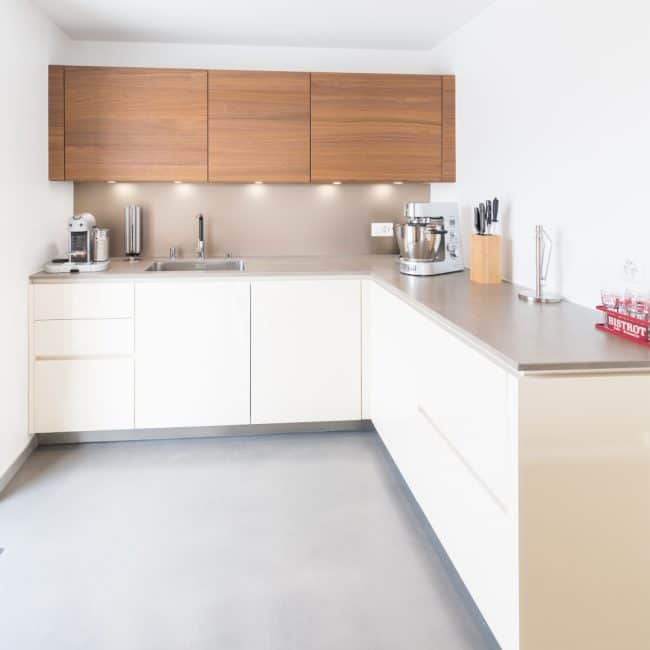
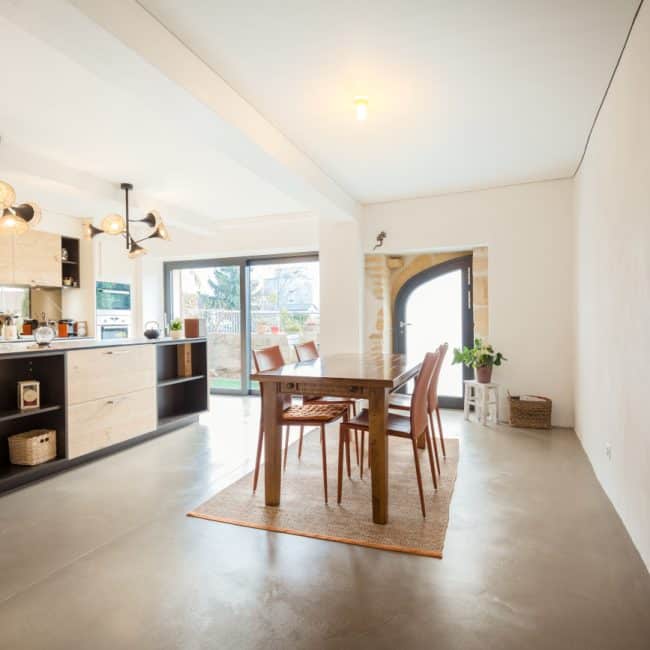
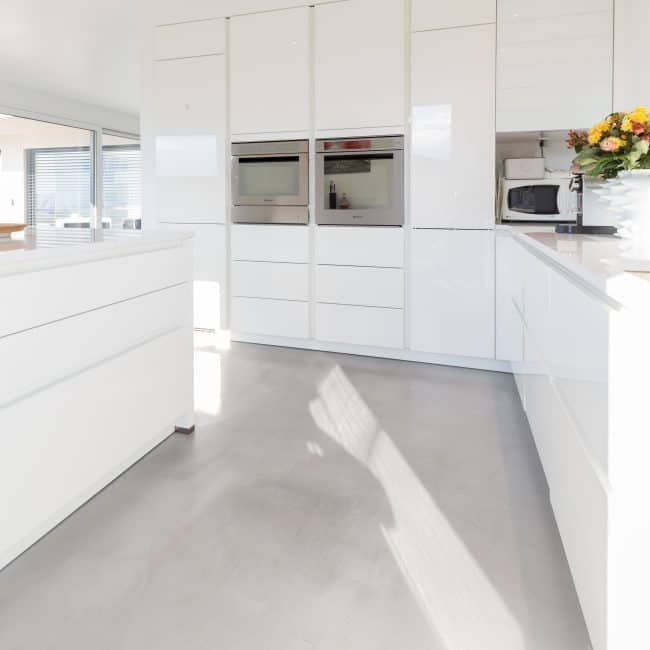
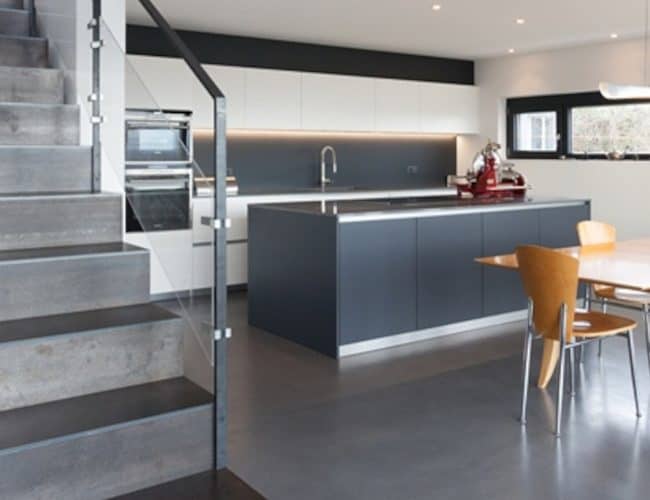
Marius Aurenti concrete flooring offers
Marius Aurenti offers a range of products for laying a micro concrete floor in your kitchen.
For each product, receive samples directly at home thanks to our material library.
Millimetric micro concrete
The millimetric micro concrete can be used to cover a pre-existing tiled or concrete floor (but not a parquet floor, as the wood works too hard and would crack).
Protected by high-performance varnishes , it is easy to maintain and clean with conventional detergents.
Marius Aurenti millimetric micro concrete is available in 71 mineral shades.
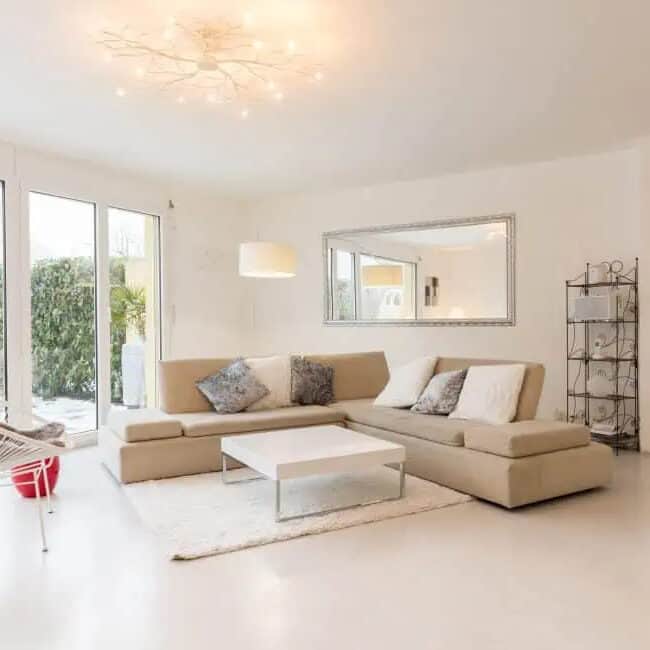
Decorative floor styles
With its rich variety of shades and visual effects, micro concrete lends itself to all kinds of decorative styles.
Here are just a few examples:
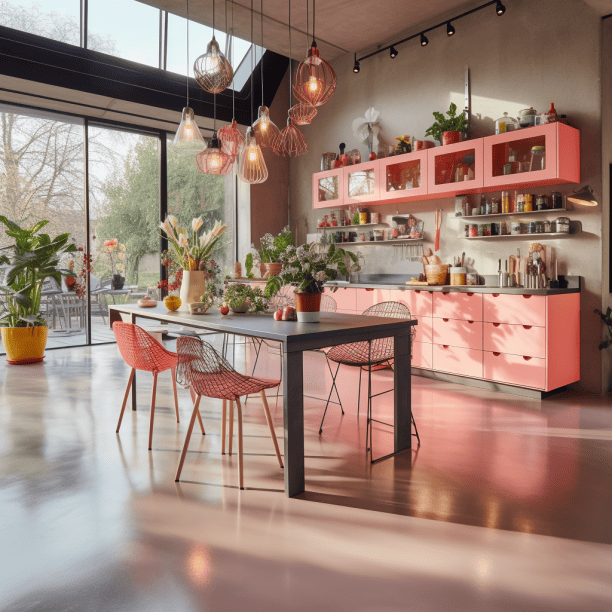
Eclectic style
With micro concrete, you can create an eclectically styled kitchen floor with a unique blend of colors, patterns and textures.
Opt for bold, contrasting micro concrete colors, mixing matte and gloss finishes to create a textured , dynamic look. Play with geometric, floral or organic patterns to add a touch of eccentricity to your kitchen floor.
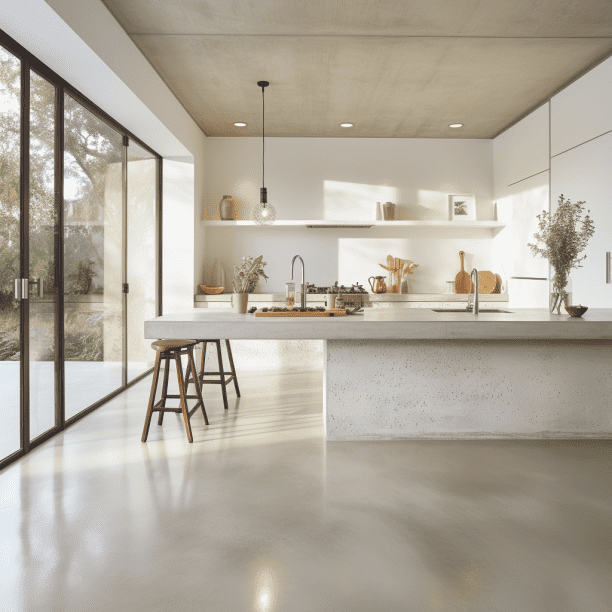
Minimalist style
Micro concrete can also be used to create a minimalist kitchen floor with a clean , modern look.
Prefer neutral colors, such as white, gray or black, and use matte finishes to create a smooth look.
This style of flooring is a perfect match for designer kitchen cabinets, clean-lined furnishings and simple accessories.

Glamorous style
Micro concrete can also be used to create a glamorous, classy kitchen floor with a sophisticated, elegant look.
In this case, choose micro concrete colors such as black, dark red, metallic gray or white, and use gloss or satin finishes to create an effect of luxury and glamour.
Combine it with high-end kitchen cabinets, crystal handles, elegant lighting and sophisticated decorative elements such as mirrors or high-gloss materials to create a kitchen with a glamorous, refined ambience.
Kitchen wall in micro concrete
On a kitchen wall Micro concrete offers a modern, industrial and minimalist look that gives your kitchen a unique style.
Matières Marius Aurenti wall concrete offers
Marius Aurenti offers several options for creating a micro concrete wall in your kitchen.
Wall-mounted concrete
Wall concrete is a millimetric concrete that can be applied in a thin layer, 1 to 2 mm thick, over various types of covering – it can even be laid over existing tiles, with professional know-how.
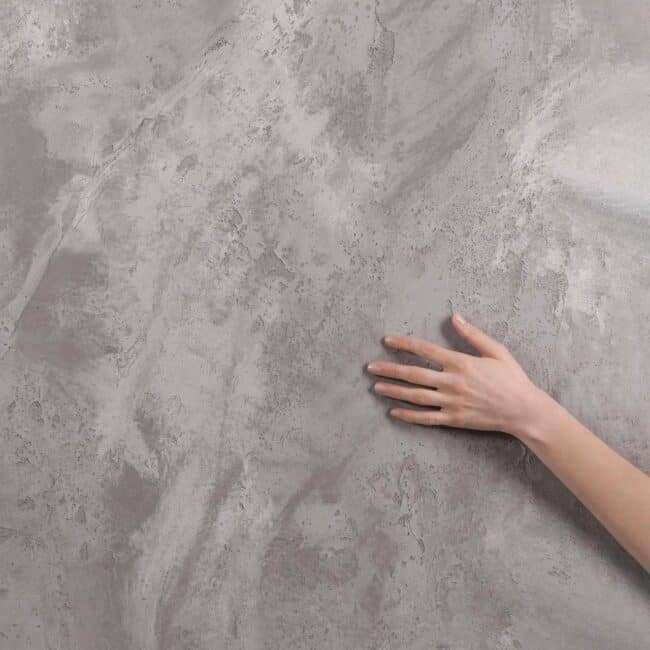
Decorative wall styles
Available in a wide range of colors, from finishes (raw, glazed, varnished, matte, gloss, satin...) and patterns (smooth, spatulated, floated, combed, organic…), micro concrete offers a wide range of possibilities for customization to create decorative kitchen walls that suit both your taste and your budget. interior design style, for example :
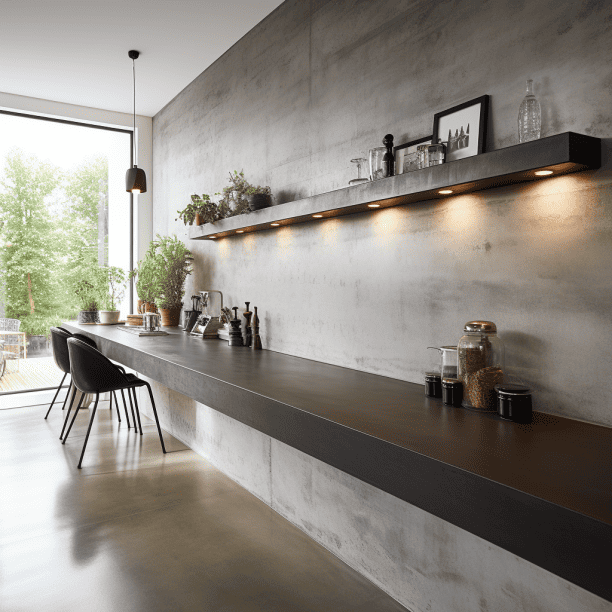
Industrial style
With its raw , minimalist look, micro concrete is perfect for creating an industrial style in the kitchen.
The gray tones of micro concrete, for example, will harmonize with stainless steel elements, industrial lighting fixtures, metal or steel cabinets, and accessories in cast iron or raw steel to create a contemporary, urban look.
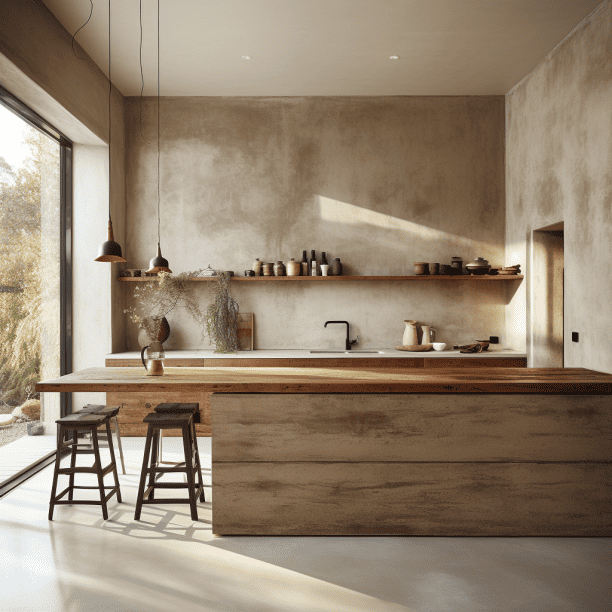
Rustic style
Although often associated with a contemporary style, micro concrete can also be used to create a rustic , authentic look in the kitchen, provided you choose warmer colors , such as earth tones or shades of beige, and textured or weathered finishes.
Combined with raw wood cabinets, wrought-iron decorative elements and vintage accessories, a micro concrete wall can create a warm, friendly atmosphere in the kitchen.
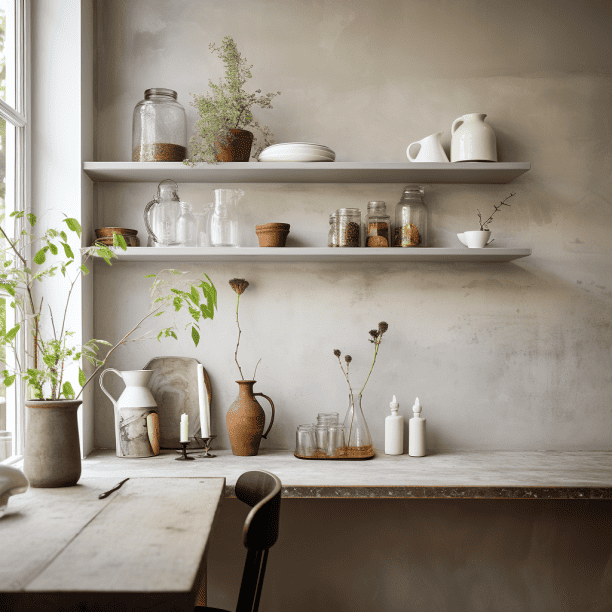
Scandinavian style
Scandinavian style, with its minimalist, uncluttered and functional design, can be complemented by a micro concrete kitchen wall in light colors, matte finishes and simple lines, to achieve a Nordic , contemporary look.
In a kitchen furnished with light wood cabinets, stainless steel kitchen accessories, and minimalist decorative elements, micro concrete can create a modern, timeless Scandinavian look.
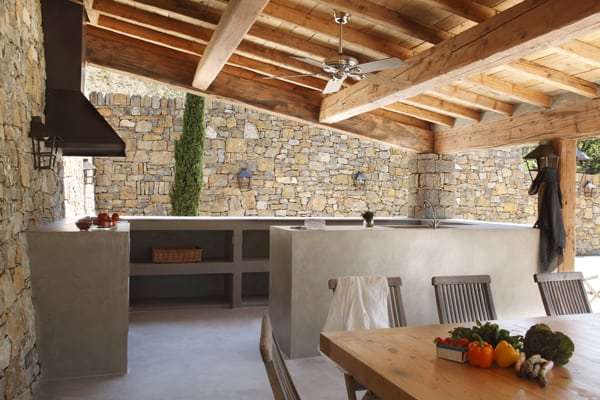
micro concrete in an outdoor kitchen
Micro concrete can be adapted to create a durable and aesthetically appealing outdoor kitchen (or summer kitchen ).
Marius Aurenti micro concrete is resistant to weather, UV, temperature variations and humidity.
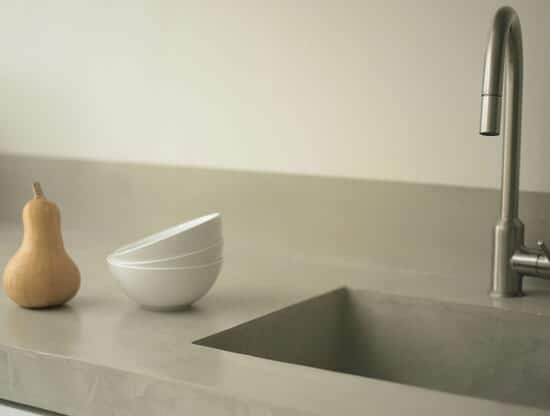
Micro concrete kitchen worktop
A micro concrete worktop is usually custom-made to suit your specific kitchen space.
It’s important to use an experienced professional for installation to ensure a high-quality finish and long-term durability .
A worktop can be built in the same color as the concrete floor and walls, giving the room a remarkable aesthetic unity.
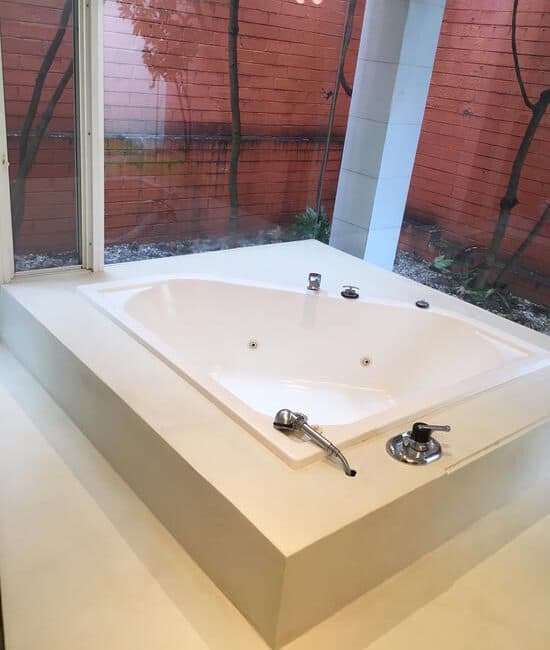
Laying micro concrete over tiles
It’s perfectly possible to lay micro concrete over tiles ( earthenware or other), provided you take a few precautions.
The tiles must be in very good condition, or tiles in poor condition must first be removed and replaced, or their position filled in.
The substrate must then be sanded and substrate to ensure lasting adhesion .



